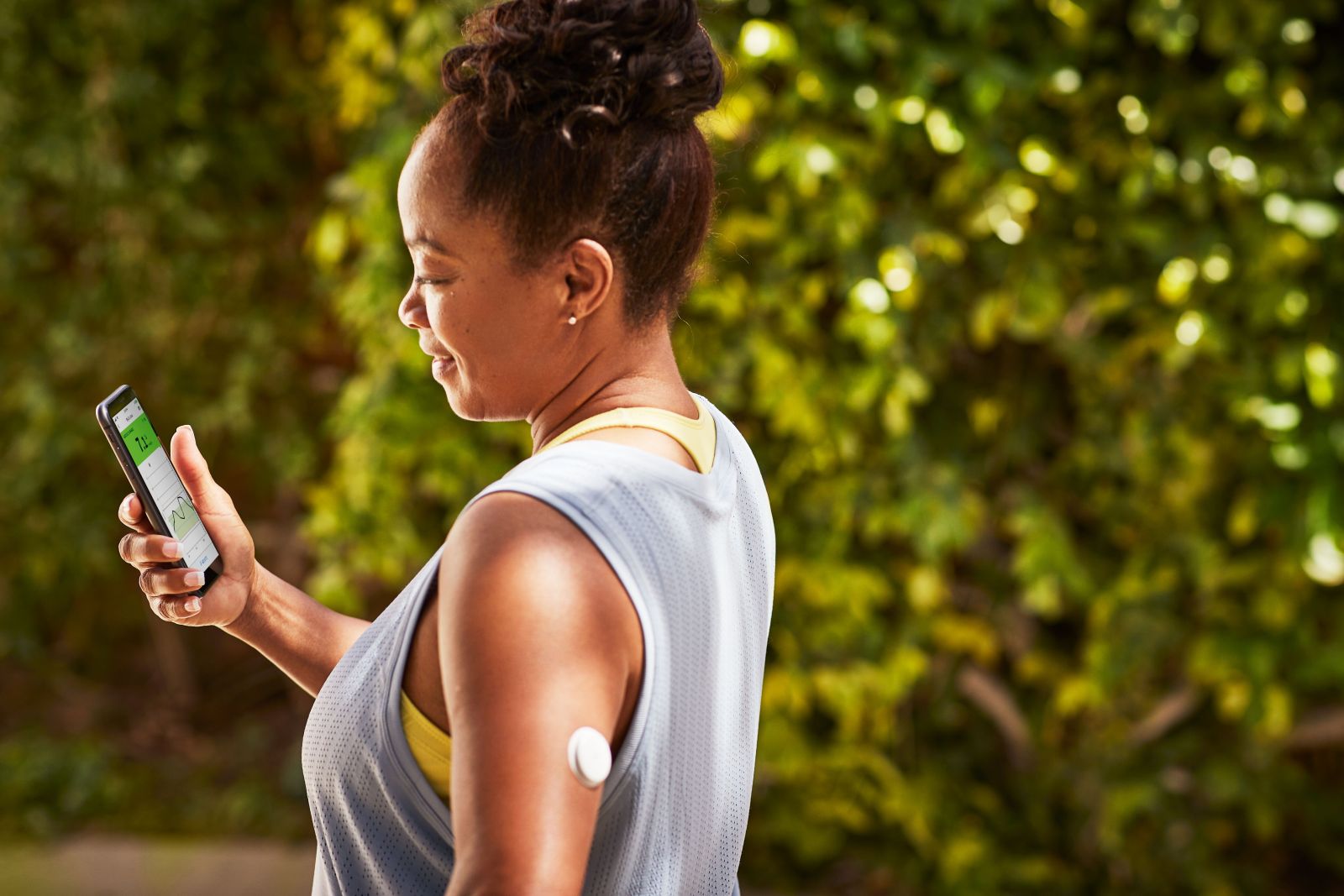Combining GLP-1s with CGM for Improved Type 2 Diabetes Care
By April Hopcroft
 With greater use of both continuous glucose monitors and GLP-1 receptor agonists in type 2 diabetes, research is beginning to show the power of combining technology and medications. In new studies presented at ATTD, CGM used with GLP-1s led to greater A1C reductions than GLP-1s alone.
With greater use of both continuous glucose monitors and GLP-1 receptor agonists in type 2 diabetes, research is beginning to show the power of combining technology and medications. In new studies presented at ATTD, CGM used with GLP-1s led to greater A1C reductions than GLP-1s alone.
Endocrinologists, diabetes educators, and other healthcare providers have long emphasized the power of continuous glucose monitoring (CGM) to improve glycemic control by providing detailed insights into glucose levels throughout the day. Likewise, experts have characterized GLP-1 receptor agonists as transformational inventions in the history of diabetes care for their significant reductions in A1C and also weight loss.
Now, data is starting to emerge on the power of these two innovations together. When combined, CGM and GLP-1s led to greater reductions in A1C than GLP-1s alone, according to research presented at the ATTD 2024 conference.
How does starting a CGM affect A1C among people already taking a GLP-1?
The first study included nearly 1,800 US adults with type 2 diabetes who were about 55 years old on average. The participants represented a wide swath of people with type 2 diabetes: about one-third used once-daily long-acting insulin only, a little over one third used rapid-acting insulin (with or without long-acting insulin), and just under one-third did not use any insulin.
After starting FreeStyle Libre CGM in addition to a GLP-1:
-
A1C fell by 1.5% from 9.8% at the start of the study to 8.3% at six weeks. This finding held true regardless of how long participants had been taking a GLP-1, the type of GLP-1 drug, and the type of insulin therapy.
-
Overall, participants who were not taking rapid-acting insulin saw 0.3% greater decreases in A1C compared to those taking that insulin.
-
As one might expect, people who began using CGM more quickly after starting a GLP-1 saw the greatest reduction in A1C.
How do A1C reductions compare among people using a GLP-1 and CGM vs. those using only a GLP-1?
Using electronic health record data, researchers compared similar groups of people with type 2 diabetes: those who used a GLP-1 and FreeStyle Libre CGM (about 24,000 people) and those who used a GLP-1 only (about 500 people).
Among the participants who used a GLP-1 and CGM, about half were not taking insulin, while one-fourth were on long-acting only insulin and one-fourth were taking multiple daily injections (MDI) with long-acting and rapid-acting insulin. All participants in both groups had a starting A1C of at least 8%.
The key findings were as follows:
-
Using a GLP-1 and CGM together led to a 2.4% reduction in A1C, which was significantly greater than the 2.1% reduction in A1C among those using only a GLP-1.
-
Participants not using insulin had the largest reduction in A1C.
What’s next?
The data suggest that combining CGM and GLP-1s can lead to greater reductions in A1C among people with type 2 diabetes. Indeed, A1C reductions among people using both CGM and GLP-1s were greater than using a GLP-1 alone.
These studies provide insight into the power of combining diabetes technology with newer medications in the real world, outside of clinical trials. However, this research was limited in that it included mostly white participants, which is not fully representative of the diverse population of people with type 2 diabetes in the US.
In these studies, about 70% of participants were Caucasian, 15% were African American, and 3% were Asian. Future trials investigating GLP-1s with CGM should include more diverse participants to bring these innovations to those who could benefit most, and to better understand how combining diabetes medications and CGM works in all populations.
For many in the field, these findings probably aren’t too much of a surprise. CGM is known to facilitate behavior change – especially dietary change – by revealing trends in glucose levels for different foods and eating habits. Likewise, GLP-1s are also thought to support healthy eating, as this drug class increases feelings of fullness and reduces hunger signals.
Access to diabetes technology and newer medications like GLP-1s remains a challenge due high out-of-pocket costs as well as shortages of GLP-1s. However, data from studies like these may play an important role in “moving the needle” and encouraging more insurance companies to cover these treatments for people with type 2 diabetes.
Learn more about diabetes technology and GLP-1s:
-
FDA Clears New OTC Stelo Continuous Glucose Monitor for Type 2 Diabetes
-
Incretins: How They Impact Blood Glucose, Diabetes, and Weight Loss
Image credit: Abbott







